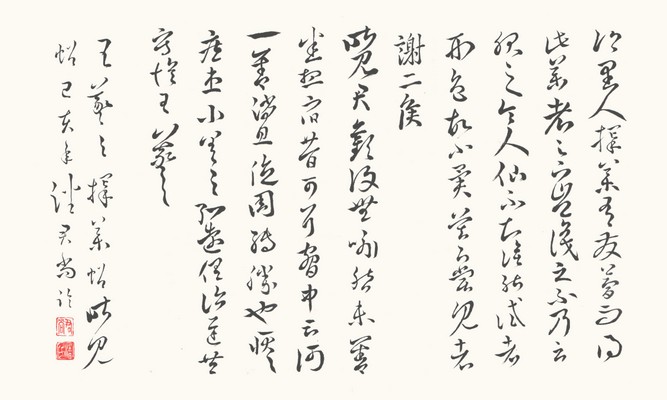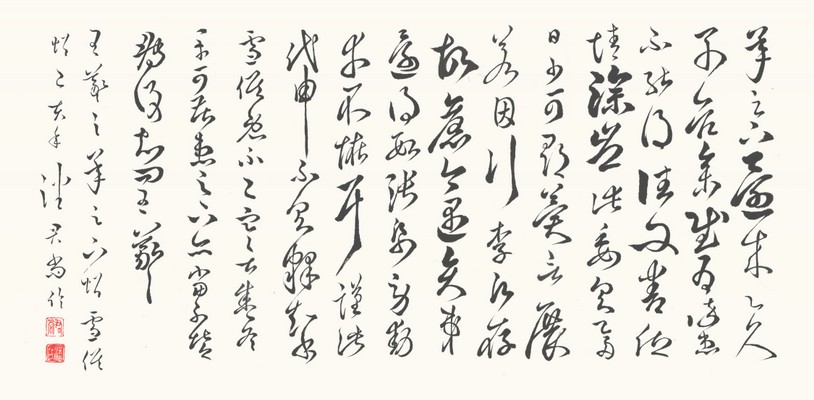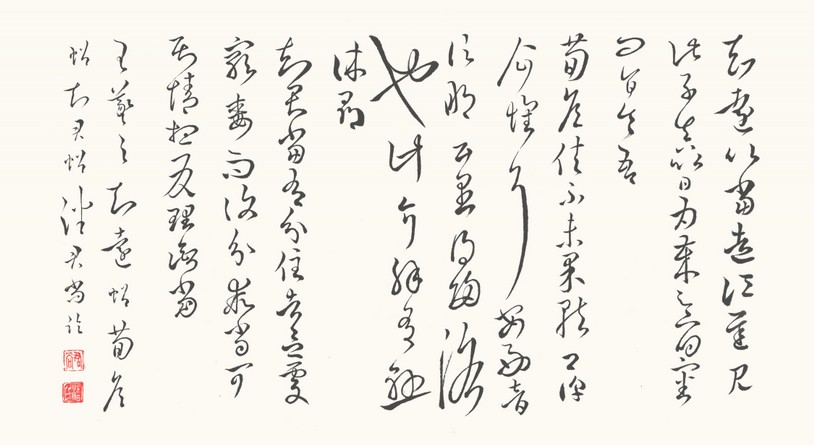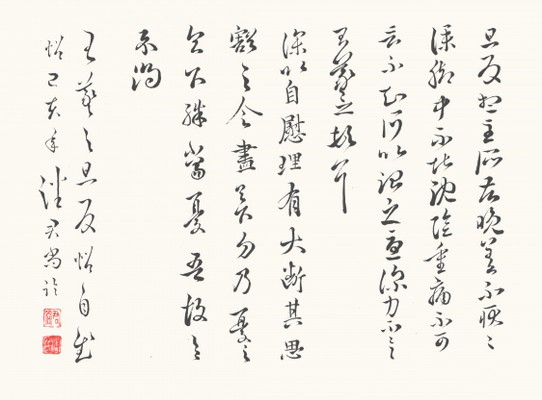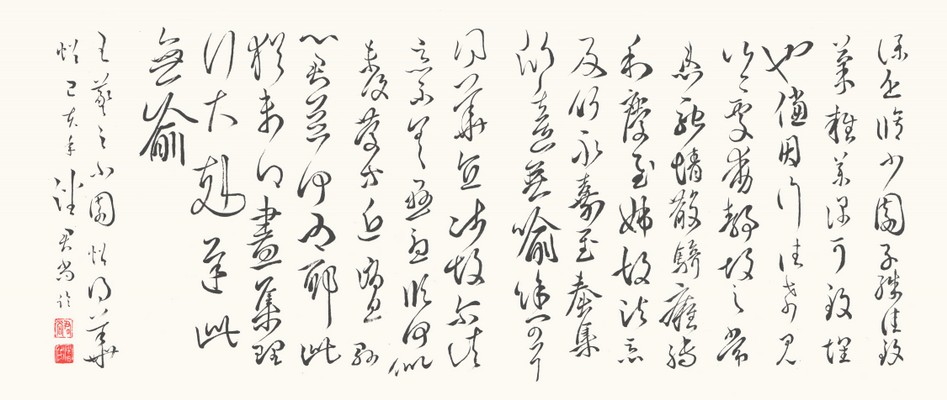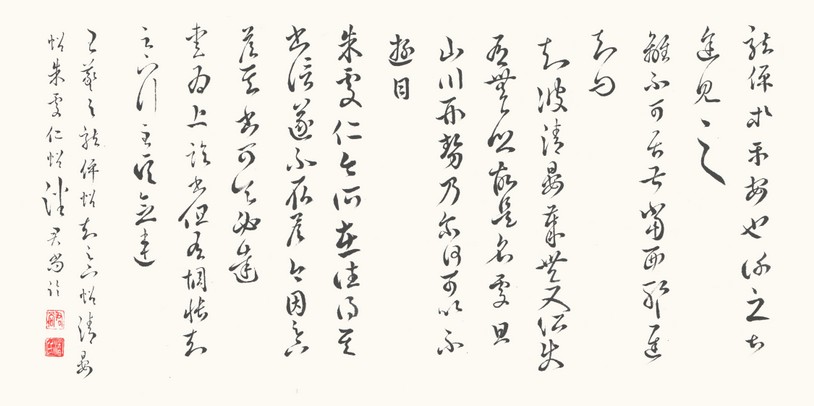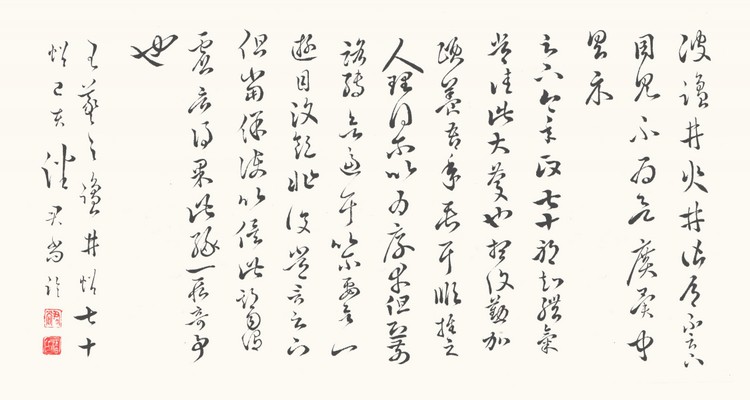Galleries and Translations > Models of Masterpieces > Models of miscellaneous Masterpieces by Wang Xizhi (part IV) 臨王羲之諸法帖 (第四部份)
Models of miscellaneous Exemplary Masterpieces by Wang Xizhi (part IX) 臨王羲之諸法帖 (第九部份)
Historical information
(I)
Wang Xizhi (王羲之) is often considered to be the most outstanding Chinese calligrapher of all time and is regarded as “The Sage of Calligraphy (書聖)” in China and Japan. Born in 303AD in an upper-class aristocratic family, Wang Xizhi started learning Chinese calligraphy at the age of seven from the renowned calligrapher Wei Shuo (衛鑠 or 衛夫人, 272-349AD). His father, Wang Kuang (王曠, ?-?AD), was a government prefecture chief (太守) and was also a calligrapher. His uncle, Wang Dao (王導, 276-339AD), was the prime minister (丞相) during the reign of Emperor Cheng of the Eastern Jin Dynasty (晉成帝, 321-342AD ). Further biographic information of Wang can be seen on my page regarding Lanting Xu (蘭亭帖).
(II)
The calligraphies presented below are my models of Wang Xizhi's handwriting found in Chunhua Imperial Archive of Calligraphy Exemplars (《淳化閣帖》). Supposedly, these handwritings were short letters and memos scribed by Wang. Although their authenticities are questionable, they are still often regarded as Exemplary Masterpieces (法帖) for calligraphers to study and observe. In the art of Chinese calligraphy, "帖(pronounced as Tie)" refers to an exemplary work that should be studied by all .
(III)
Since the originals in the Chunhua Imperial Archive of Calligraphy Exemplars (《淳化閣帖》) can be parts of or whole letters/memos scribed by Wang, translations that are provided below, if available, may not be entirely precise, for they can be interpreted out of context. Further, whether Wang had actually scribed them remains questionable. Accordingly, scholars should be wary of using these as authentic historical references.
A model of Ze Yao Tie (擇藥帖) and Zuo Jian Tie (昨見帖)
35 X 59 cm
Click to Enlarge. Reserved, not available in shop.
Ze Yao Tie (擇藥帖):
Original Classical Chinese: 鄉里人擇藥,有發簡夢而得此藥者。足下豈識之不?乃雲服之令人仙,不知誰能試者。形色故小異,莫即嘗見者。謝二侯。
English: Among the people who gather medicinal drugs in the village some [say they] find this drug after they had a dream about it. Do you happen to know about this? They
also say that whoever takes it becomes a transcendent. I don’t know if anyone can verify this. Its shape and color are slightly unusual. Nobody had ever seen itbefore. (Translated by Antje Richter & Charles Chace in The Trouble with Wang Xizhi: Illness and Healing in a Fourth-Century Chinese Correspondence (T’oung Pao 103-1-3 (2017) 33-93)).
Zuo Jian Tie (昨見帖):
Original Classical Chinese: 昨見君,歡復無喻。然未善悉,想宿昔可耳。脅中云何,一善消息,值周轉勝也。耿耿。疾患小差,與弘遠俱詣遲共寫懷。王羲之。
English: NA. The entire phrase may not be translated, for the context in which it was written is unknown or uncertain.
A model of Cheng Zu Xia Tie (承足下帖) and Xue Hou Tie (雪候帖)
35 X 72 cm
Click to Enlarge. Reserved, not available in shop.
Cheng Zu Xia Tie (承足下帖):
Original Classical Chinese: 承足下還來,已久別。欲參慰為染。患不能得往問,眷仰情深,豈此委具。一兩日少可,尋冀言展。若因行李願存故舊,今遇賢弟,還得數張紙勞動,幸不怪耳!謹此代申,不具。釋智永。
English: NA. The entire phrase may not be translated, for the context in which it was written is unknown or uncertain.
Xue Hou Tie (雪候帖):
Original Classical Chinese: 雪候既不已,寒甚。盛冬平可,苦患。足下亦當不堪之。轉復知問。王羲之。
English: NA. The entire phrase may not be translated, for the context in which it was written is unknown or uncertain.
A model of Zhi Yuan Tie (知遠帖), Xun Hao Tie (荀侯帖), and Zhi Jun Tie (知君帖)
35 X 64 cm
Click to Enlarge. Reserved, not available in shop.
Zhi Yuan Tie (知遠帖):
Original Classical Chinese: 知遠比當造,頃遲見此子。真以日為歲。足下得審問,旨令吾。
English: NA. The entire phrase may not be translated, for the context in which it was written is unknown or uncertain.
Xun Hao Tie (荀侯帖):
Original Classical Chinese: 荀侯佳不?未果就卿,深企懷耳。安好音信,明公還得歸洛也,計令解有懸休尋。
English: Thinking of you at mid-month, I am overwhelmed by an exhaustive longing that I can hardly bear. How is everyone’s health in this rainy, humid weather? Did the
Adjutant respond to acupuncture and moxibustion? I miss you very much. You should seriously relax yourself. When the weather clears up, I will call upon you. I shall not elaborate more in this letter to you. Wang Xizhi narrates. (Translated by Antje Richter & Charles Chace in The Trouble with Wang Xizhi: Illness and Healing in a Fourth-Century Chinese Correspondence (T’oung Pao 103-1-3 (2017) 33-93), edited by KS Vincent Poon).
Zhi Jun Tie (知君帖):
Original Classical Chinese: 知君當有分住者,念處窮毒而複分乖尚可居情想反理斷當。
English: NA. The entire phrase may not be translated, for the context in which it was written is unknown or uncertain.
A model of Dan Fan Tie (旦反帖) and Zi Wei Tie (自慰帖)
35 X 48 cm
Click to Enlarge. Reserved, not available in shop.
Dan Fan Tie (旦反帖):
Original Classical Chinese: 旦反想至所苦,晚差不?耿耿。僕腳中不堪,沈陰重痛不可言,不知何以治之。憂深, 力不具,王羲之頓首。
English: I hope the reply I sent this morning has arrived. Has your ailment gotten better? I am concerned about you. My legs cannot bear this deeply overcast weather as the pain is bad that it is indescribable. I don’t know how to remedy it. I am deeply worried and I always feel exhausted. Wang Xizhi gratefully bows in respect and deference. (Translated by Antje Richter & Charles Chace in The Trouble with Wang Xizhi: Illness and Healing in a Fourth-Century Chinese Correspondence (T’oung Pao 103-1-3 (2017) 33-93), edited by KS Vincent Poon).
Zi Wei Tie (自慰帖):
Original Classical Chinese: 深以自慰,理有大斷,其思豁之令盡,足下勿乃憂之。足下殊當憂吾,故欲,示問。
English: NA. The entire phrase may not be translated, for the context in which it was written is unknown or uncertain.
A model of Xiao Yun Tie (小園帖) and De Hua (得華帖)
35 X 83 cm
Click to Enlarge. Reserved, not available in shop.
Xiao Yun Tie (小園帖):
Original Classical Chinese: 僕近脩小園子,殊佳。致果雜藥,深可致懷也。傥因行往,希見。比二處動靜,故之常患,馳情。散騎癰轉利慶慰姊故,諸惡反側,永嘉至奉集,欣喜無喻,余可耳。
English: NA. The entire phrase may not be translated, for the context in which it was written is unknown or uncertain.
De Hua (得華帖):
Original Classical Chinese: 得華直疏故爾,諸惡不差,懸憂順何似未複,慶等近消息懸心,君並何為耶?此猶未得盡集,理行大克,遲此無喻。
English: NA. The entire phrase may not be translated, for the context in which it was written is unknown or uncertain.
A model of Long Bao Tie (龍保帖), Zhi Zu Xia Tie (知足下帖), Qing Yan Tie (清晏帖), and Zhu Chu Ren Tie (朱處仁帖)
35 X 71 cm
Click to Enlarge. Reserved, not available in shop.
Long Bao Tie (龍保帖):
Original Classical Chinese: 龍保等平安也。謝之。甚遲見之 (卿舅,可耳至,為簡隔也。)
English: Long Bao and others are all well. Thank you. I really want and am waiting to meet your uncle. Is he all right? We are certainly separated by a far distance. (Interpreted by KS Vincent Poon based on the vernacular Chinese interpterion below by Professor Lin Li E)
Vernacular Chinese: 龍保(王羲之的幼輩)等人都平安,謝謝您。很想見您舅舅(遲,待也),他可好?真是疏隔得好久、好遠呀! (譯者:林麗娥教授)
Zhi Zu Xia Tie (知足下帖):
Original Classical Chinese: (知足下行至吳,念違) 離不可居。叔當西耶?遲知問。
English: I know that you have arrived at the province of Wu, yet I think it is too far away from your home, and so it is undesirable for you to reside in. Does uncle have any plans to travel west? Hope you can reply. (Interpreted by KS Vincent Poon based on the vernacular Chinese interpterion below by Professor Lin Li E)
Vernacular Chinese: 知道您(王羲之的妻弟郗愔)行將出任吳郡之守,想其地離家太遠,不適合居處(後來郗愔固辭,乃改至浙江臨海)。叔(指郗愔之弟郗曇)是否將有西行?希望您能回信! (譯者:林麗娥教授)
Qing Yan Tie (清晏帖):
Original Classical Chinese: 知彼清晏歲豐,又所出有無,鄉故是名處,且山川形勢乃爾,何可以不遊目?
English: I know that you are at a place that is tranquil, peaceful, and with good harvest every year. It produces extraordinary goods that cannot be found in other places, and so the place is renowned since the past. Further, its sceneries of mountains and rivers are equally outstanding. Why don’t you go sightseeing for a bit? (Interpreted by KS Vincent Poon based on the vernacular Chinese interpterion below by Professor Lin Li E)
Vernacular Chinese: 知道您(王羲之的好友周撫)那裏(蜀地)時世清和,年歲豐收,所生產的又常為他處所沒有的,自來就是聞名的地方,而且山川形勢也是一樣的著稱,怎可以不去遊賞觀覽呢? (譯者:林麗娥教授)
Zhu Chu Ren Tie (朱處仁帖):
Original Classical Chinese: 朱處仁今所在? 往得其書信,遂不取答。今因足下答其書,可令必達....
English: Where is Zhu Churen currently at? I used to receive his letters, but currently I haven’t received any response from him. Since now you are writing to respond to him, I am sure you can relay my message to him…. (Interpreted by KS Vincent Poon based on the vernacular Chinese interpterion below by Professor Lin Li E)
Vernacular Chinese: 朱處仁,不知他現在的住處,以前得過他寫來的信,沒有即時答覆,現在想藉著您(王羲之的好友周撫)的回信附寄給他,…(下有闕文)。 (譯者:林麗娥教授)
A model of Yan Jin Tie (鹽井帖) and Qi Shi Tie (七十帖)
35 X 66 cm
Click to Enlarge. Reserved, not available in shop.
Yan Jin Tie (鹽井帖):
Original Classical Chinese: 彼鹽井火井皆有不?足下目見不?為欲廣異聞,具示。
English: Does your place have any salt well or natural gas wells? Have you seen any with your own eyes? I wish to broaden my knowledge on novel and exotics things. Please respond. (Interpreted by KS Vincent Poon based on the vernacular Chinese interpterion below by Professor Lin Li E)
Vernacular Chinese: 你們(王羲之的好友周撫)那裏蜀地鹽井、火井都有嗎?你親眼看過嗎?為了想增廣異聞,請回信! (譯者:林麗娥教授)
Qi Shi Tie (七十帖):
Original Classical Chinese: 足下今年政七十耶。知體氣常佳,此大慶也。想複懃加頤養。吾年垂耳順,推之人理,得爾以為厚幸,但恐前路轉欲逼耳。以爾要欲一遊目汶領,非複常言。足下但當保護以俟此期,勿謂虛言。得果此緣,一段奇事也!
English: NA. The entire phrase may not be translated, for the context in which it was written is unknown or uncertain.
